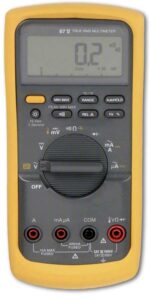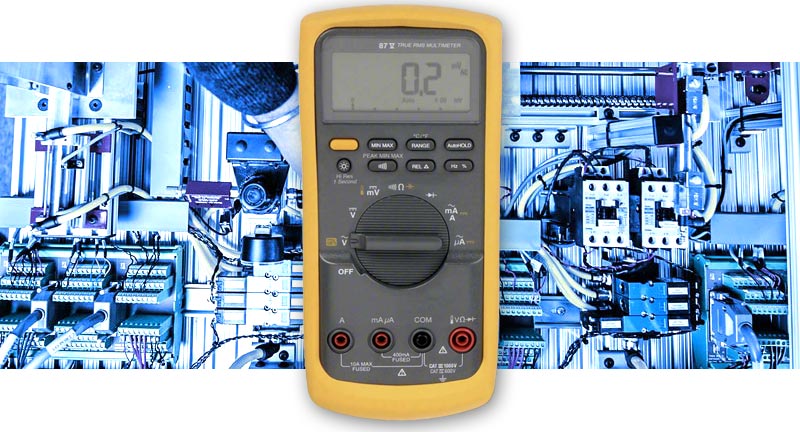Maintaining the health of electric motors is vital for sustained functionality and preventing breakdowns.
To find an open electric motor winding using a multimeter, you’ll be measuring the resistance of the motor windings to identify any open circuits.
This guide outlines a systematic process for assessing motor windings – covering steps such as safe power disconnection, resistance measurement using a multimeter and visual inspection.
Follow these steps for a structured approach for optimal motor performance
Note: Ensure safety precautions by disconnecting power and following proper lockout/tagout procedures before attempting any testing on electrical equipment.
 Turn Off Power:
Turn Off Power:
Disconnect power to the motor. This may involve shutting off a circuit breaker or isolating the motor from the power source.
Disconnect Motor Leads:
Disconnect the motor leads from the power source and any control circuit.
Set Multimeter:
Set your multimeter to the resistance (ohms) mode. Choose an appropriate range for the expected resistance of the motor windings. If you’re unsure, start with a high resistance range.
Identify Motor Windings:
Identify the motor winding leads. Motors typically have multiple windings (common, start, run, etc.).
Measure Resistance:
Connect the multimeter leads to two of the motor winding leads. Repeat this for each combination of winding leads.
A healthy motor winding should have a resistance within the expected range. Consult the motor’s technical documentation for the correct resistance values.
Check for Infinite Resistance:
An open winding will typically show an infinite resistance reading (OL or overload) on the multimeter. This indicates that there is no electrical continuity, and the circuit is open.
Repeat for Other Windings:
Test each winding in the motor by connecting the multimeter leads to different combinations of winding leads. Look for consistent readings within the expected range and identify any windings with infinite resistance.
Visual Inspection:
Perform a visual inspection of the motor windings for any signs of physical damage, such as broken wires or other issues that could cause an open circuit.
Interpret Results:
If you find a winding with infinite resistance, it indicates an open circuit. This could be due to a broken wire, a disconnected connection, or other issues.
Repair or Replace:
If an open winding is identified, you may need to repair or replace the motor. Repair might involve fixing the broken wire or addressing the specific issue causing the open circuit.
Final thoughts…
Remember to consult the motor’s technical documentation for specific resistance values and other testing guidelines. ETS provides these How To Guides intended for use by qualified electricians and technicians. If you are unsure or uncomfortable with the process, please seek assistance from a qualified worker.
For another multimeter tutorial, see our article: 10 steps on how to use a multimeter to find a shorted electric motor winding
We also recommend Home Depots Introductory guide to using multimeters.





